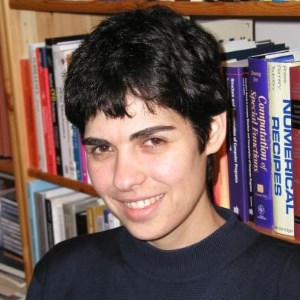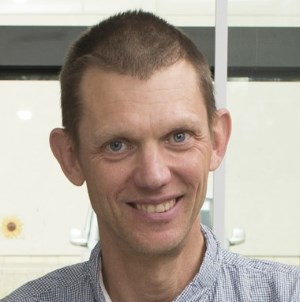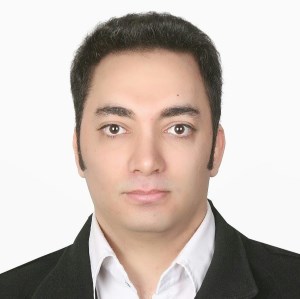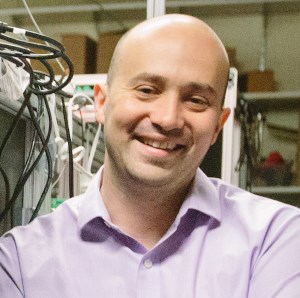Links to external sources may no longer work as intended. The content may not represent the latest thinking in this area or the Society’s current position on the topic.
Connectome to behaviour: modelling C. elegans at cellular resolution

Scientific discussion meeting organised by Dr John White FRS, Dr Stephen Larson, Dr Andre Brown, Dr William Schafer and Professor Netta Cohen
It has been 30 years since the "mind of the worm" was published in Philosophical Transactions. Predicting C. elegans’ behaviour from its wiring diagram has been an enduring challenge since then. This meeting brought bring together neuroscientists, physicists, and engineers to discuss advances in neural activity imaging, behaviour quantification, and multiscale simulations and how they are bringing the goal of whole-animal modelling at cellular resolution within reach.
The schedule of talks and speaker biographies are available below. Recorded audio of the presentations are available below. Meeting papers are now published in Philosophical Transactions B.
Enquiries: Contact the Scientific Programmes team.
Organisers
Schedule
Chair

Professor Netta Cohen, University of Leeds, UK

Professor Netta Cohen, University of Leeds, UK
Netta Cohen is Professor of Complex Systems at University of Leeds in the UK. Her lab works actively on achieving an integrated understanding of sensory motor control in C. elegans. Netta completed a BSc in applied physics from Columbia University, in New York, followed by an MSc and PhD in physics from the Technion -- Israel Institute of Technology in Haifa, Israel. She started her research in theoretical quantum optics, before turning her interests to biological physics. Her PhD research combined experiment and theory to study the structure and function of self-assembled networks of heart cells in vitro. She has been working on the interface of biological physics, computational and systems neuroscience, and bio-inspired computing ever since. Netta's interest in C. elegans stems from its relatively small, fully mapped and invariant neural circuitry, which begs the question: What dynamics must this circuit support to generate the rich repertoire of behaviours observed in this animal? Her work on the worm's locomotion system led to a step change in our understanding of the rhythmic pattern generation mechanism driving undulations and its modulation by mechanical forces. This has formed the basis for modeling work by her group and in the wider community, spanning fluid and biomechanics, neural circuits and sensorimotor control of behaviour.
| 09:05 - 09:30 |
Connecting a connectome to behaviour: evolution and ensemble analysis of integrated neuromechanical models of C. elegans
Brain, body and environment are in continuous dynamical interaction, and it is becoming increasingly clear that an animal's behavior must be understood as a product not only of its nervous system, but also of the ongoing feedback of this neural activity through the biomechanics of its body and the ecology of its environment. Modeling has an essential integrative role to play in such an understanding. Successful whole-animal modeling requires an animal for which detailed behavioral, biomechanical and neural information is available and a modeling methodology which can gracefully cope with the constantly changing balance of known and unknown biological constraints. We will discuss recent progress on neuromechanical modeling in the nematode worm, with a special focus on our unique methodology for exploring the unknown biological parameters of the model through the use of evolutionary algorithms. We evolve the neural networks of the model worms on what they should do, behaviorally, with little or no instructions on how to do it. The effort is then to analyze and understand the solutions as a way to generate novel, often unexpected, hypotheses. We will focus the talk on how the rhythmic pattern is both generated and propagated along the body during locomotion. We discuss both the feasibility and challenges of whole-animal modeling. 
Dr Eduardo Izquierdo, Indiana University, USA

Dr Eduardo Izquierdo, Indiana University, USAEduardo J. Izquierdo is an Assistant Professor at Indiana University in the Cognitive Science Program and the School of Informatics and Computing. He grew up in Venezuela, where he received a Computer Engineering degree (2002). After moving to the UK he earned a PhD (2008) in Computer Science and Artificial Intelligence studying learning behaviour in embodied and situated neural network models from the University of Sussex in the Center for Computational Neuroscience and Robotics. He started modelling the nervous system and behaviour of C. elegans as a postdoctoral researcher at the University of Oregon’s Institute of Neuroscience in close collaboration with experimental neuroscientists. Izquierdo moved to Indiana University in 2010 where he has focused on understanding how behaviour emerges from brain, body, environment interactions through the use of computational models. |
|
|---|---|---|
| 09:35 - 10:00 |
Powerful and interpretable behavioural features for classifying worms and constraining simulations
Behaviour is a sensitive and integrative readout of nervous system function and an attractive measure for assessing the performance of generative neural simulations. In C. elegans, most behavioural quantification starts with recording freely behaving animals crawling on the surface of an agar plate or swimming in fluid. Video data is rich but high-dimensional and so the next step of analysis is typically some form of tracking and feature extraction. Modern machine learning methods are powerful but notoriously difficult to interpret, while handcrafted features are interpretable but do not always perform as well. Here André reports a new set of handcrafted features to compactly quantify worm behaviour. André’s group combine clustering and feature selection to analyse behavioural differences with a tunable level of granularity that balances power and interpretability for a given application. The group use the new feature set to study the impact of mutations and optogenetic perturbations on worm behaviour and suggest how the same approach can be used to evaluate and constrain simulation output from the OpenWorm project. 
Dr André Brown, MRC LMS, Imperial College London, UK

Dr André Brown, MRC LMS, Imperial College London, UKAndré Brown studied Physics at Memorial University of Newfoundland and the University of Pennsylvania where he worked on single molecule biophysics and mechanics. He began working on worm behaviour as a postdoc at the MRC Lab of Molecular Biology in Cambridge in 2009. Since 2013, he has been a group leader at the MRC London Institute of Medical Sciences and Imperial College London where his group works on quantitative phenotyping to understand how genetic variation and drugs affect behaviour. |
|
| 10:05 - 10:30 |
Three-dimensional simulation of the C. elegans body and muscle cells in liquid and gel environments for behavioural analysis
In order to better understand how a nervous system may control the movements of an organism, Dr Andrey Palyanov has created a three-dimensional simulated physical model of the C. elegans body. The body model is created with a particle-system-based simulation engine known as Sibernetic, which implements the smoothed particle hydrodynamics algorithm. The model includes a body-wall cuticle subject to hydrostatic pressure. This cuticle is then driven by body wall muscle cells whose positions and shape are derived from C. elegans anatomy, determined from light microscopy and electron micrograph data. Andrey shows that by using different muscle activation patterns, this model is capable of producing C. elegans-like behaviours, including crawling and swimming locomotion in environments with different viscosities while fitting multiple additional known biomechanical properties of the animal. 
Dr Andrey Palyanov, AP Ershov Institute of Informatics Systems, Siberian Branch of the Russian Academy of Sciences, Russia

Dr Andrey Palyanov, AP Ershov Institute of Informatics Systems, Siberian Branch of the Russian Academy of Sciences, RussiaAndrey Palyanov received his MSc degree in Biological and Chemical Physics from Novosibirsk State University, Russia, in 2004 and PhD degree in Chemical Physics from Voevodsky Institute of Chemical Kinetics and Combustion in 2008. During his PhD studies he worked in Kutateladze Institute of Thermophysics, Laboratory of Simulation, and in Université Louis Pasteur, Laboratory of Biophysical Chemistry (headed by Martin Karplus). After that he works in AP Ershov Institute of Informatics Systems, Laboratory of Complex Systems Simulation, as a senior researcher. Interested in fundamental principles of neural systems functioning, in the period from 2008 until 2011 he developed the CyberElegans simulator. In 2011 he joined the international OpenWorm Project aimed at creating a virtual C. elegans in a computer, and currently belongs to core team members of the project. Andrey Palyanov and his scientific group work mainly on simulation of C. elegans biomechanics, muscular system and some of its neural circuits. |
|
| 10:35 - 11:05 | Coffee | |
| 11:05 - 11:30 |

Professor Netta Cohen, University of Leeds, UK

Professor Netta Cohen, University of Leeds, UKNetta Cohen is Professor of Complex Systems at University of Leeds in the UK. Her lab works actively on achieving an integrated understanding of sensory motor control in C. elegans. Netta completed a BSc in applied physics from Columbia University, in New York, followed by an MSc and PhD in physics from the Technion -- Israel Institute of Technology in Haifa, Israel. She started her research in theoretical quantum optics, before turning her interests to biological physics. Her PhD research combined experiment and theory to study the structure and function of self-assembled networks of heart cells in vitro. She has been working on the interface of biological physics, computational and systems neuroscience, and bio-inspired computing ever since. Netta's interest in C. elegans stems from its relatively small, fully mapped and invariant neural circuitry, which begs the question: What dynamics must this circuit support to generate the rich repertoire of behaviours observed in this animal? Her work on the worm's locomotion system led to a step change in our understanding of the rhythmic pattern generation mechanism driving undulations and its modulation by mechanical forces. This has formed the basis for modeling work by her group and in the wider community, spanning fluid and biomechanics, neural circuits and sensorimotor control of behaviour. |
|
| 11:35 - 12:20 | Panel discussion |
Chair

Dr William Schafer, MRC Laboratory of Molecular Biology, UK

Dr William Schafer, MRC Laboratory of Molecular Biology, UK
Bill Schafer studied Biology at Harvard University, then moved to UC Berkeley for graduate studies in Biochemistry. His PhD thesis in the lab of Jasper Rine described the role of protein prenylation in yeast mating factors and Ras proteins. His postdoctoral research in the lab of Cynthia Kenyon at UCSF investigated the effects of monoamines on behavior. In 1995, he established his own group in the Division of Biology at UCSD, and in 2006 he moved his group to the LMB in Cambridge. His current research focuses on the molecules of somatosensation, the processing of sensory information by neuronal microcircuits, and the quantitative analysis of behavioral phenotypes. He is a member of EMBO, and has been the receipient of a Presidential Early Career Award from the NIH and a Wellcome Trust Senior Investigator Award.
| 13:15 - 13:40 |
Ion channels: from literature to computational model
Ion channels are pore-forming proteins, found in the membranes of all cells. They are responsible for many known functions include shaping action potentials and gating the flow of ions across the cell membrane. The nematode Caenorhabditis elegans genome codes for members of almost all the main families of ion channels. Many studies and electrophysiological experiments have been focused on ion channels and transporter functional genomics in C. elegans. However, due to lack of computational approaches in such investigations and obstacles in acquiring original experimental data, building a toolkit for collecting and digitizing data from available publications and then modelling ion channels in cells of interest was the main requirement at the first place. As part of the OpenWorm project, Vahid created the ChannelWorm in order to: 1) integrate and structure data related to ion channels in C. elegans; 2) digitize and curate electrophysiological data from publications; 3) develop APIs for accessing data and keeping data up-to-date; 4) build Hodgkin-Huxley models for ion channels based on experimental patch clamp studies; and 5) estimate kinetics and build models for ion channels with no patch clamp data available based on homologous channel types. 
Vahid Ghayoomie, The Openworm Foundation, USA

Vahid Ghayoomie, The Openworm Foundation, USAWhile studying BSc in Computer, and doing programming as a part-time job, the enjoyment of problem-solving, drove me to the field of computer hacking (or more ethical, application-penetration testing). Reading some books about philosophy, history, and then physics and biology, changed my path and caused me to think about hacking into the life’s code instead of someone else’s. So, I began to read biology references and applied for MSc in Biology-Biochemistry. Being introduced to the OpenWorm community and their interesting goal to build the first digital organism in a computer and also some other initiatives in the Neuroscience field, lead me to believe that the integration of Computational Biology and Neuroscience is one of the most interesting research areas. Since ion channels are one of the most important proteins participating in neuronal activities, decided to focus on studying ion channels and their computational models. |
|
|---|---|---|
| 13:45 - 14:10 |
The pan-neuronal regulator CMK-1 acts locally to enable flexible behaviours
The ability to adapt behaviour to environmental fluctuations is critical for survival of organisms ranging from invertebrates to mammals. The behavioural repertoire of Caenorhabditis elegans nematodes includes several that are modulated by prior experience, including thermotaxis, mechanosensation, and chemotaxis. Work by Miriam's research group and others (e.g. Yu et al., 2014; Schild et al., 2014) has linked plasticity in many of these behaviours to a calcium and calmodulin-dependent kinase encoded by the cmk-1 gene. CMK-1 is the sole ortholog of mammalian CaMKI/IV. Despite the expression of CMK-1 in most, if not all of the 302 neurons that make up the hermaphrodite nervous system, CMK-1 seems to function cell-autonomously in primary sensory neurons to enable flexible behaviours. This presentation will review studies of CMK-1 function in the C. elegans nervous system as an entry point for considering the ways in which flexibility and experience shape behaviour. 
Professor Miriam B Goodman, Stanford University, USA

Professor Miriam B Goodman, Stanford University, USAMiriam B Goodman is chair and professor Molecular and Cellular Physiology at Stanford University. She grew up near the National Institutes of Health in Bethesda, MD and got her start writing code in two NIH research labs. Following undergraduate work in Biochemistry and a PhD in the neurobiology of vertebrate hearing, she turned to C. elegans as a postdoctoral researcher at the University of Oregon and Columbia University. She pioneered in vivo recording from identified C. elegans neurons and has used this technique together with genetic dissection to decipher the molecular events responsible for touch and temperature sensation. Her research has been recognized by the Michael and Kate Bárány award of the Biophysical Society (2014) and by an Eppendorf and Science prize in Neuroscience (2004). Today, her laboratory investigates sensory transduction and plasticity by combining in vivo electrophysiology with genetics and novel tools for sensory stimulation, through quantitative behavioral studies, as well as light and electron microscopy. Her research group also investigates the mechanics of force transfer and genetics of mechanical neuroprotection. |
|
| 14:15 - 14:40 |
Developmental connectomics and circuit insights for rhythm generation
The ability of animals to generate goal oriented motor behaviors ensures their survival. Professor Mei Zhen will present results that begin to describe the molecular and cellular origins of motor rhythm in C. elegans. Through cell ablation, electrophysiology, and calcium imaging, Mei will show the following: 1) forward and reverse movements are driven by different oscillators; 2) the cholinergic and excitatory A class motor neurons exhibit intrinsic and oscillatory activity that is sufficient to drive reverse movements without premotor interneurons; 3) the UNC-2 P/Q/N VGCC (voltage-activated calcium current) underlies A motor neuron’s oscillation; 4) the descending premotor interneurons AVA, via a conserved gap junction and chemical synapse configuration, exert state-dependent inhibition and potentiation of A motor neuron’s intrinsic activity to determine the propensity and duration of reverse movements. Previously, Professor Zhen’s group and others showed that only the body wall muscles generate L-VGCC-dependent action potential bursts. Hence excitatory motor neurons themselves derive P/Q/N-VGCC-dependent oscillatory motor rhythms and body wall muscles control bursting; descending interneurons regulate their motor neuron activity to control the reversal motor state. Hence, the C. elegans locomotory behaviors are driven by a fundamentally conserved (CPG-driven), but anatomically compressed motor circuit. Mei proposes that functional compression, that a single neuron or neuron class adopt multiple roles when a nervous system constrained by cell numbers, is a property that allows small animals to serve as compact models to dissect the organizational logic of circuits. 
Professor Mei Zhen, Lunenfeld-Tanenbaum Research Institute and University of Toronto, Canada

Professor Mei Zhen, Lunenfeld-Tanenbaum Research Institute and University of Toronto, CanadaDr Mei Zhen received her PhD in Biochemistry with Dr Peter Candido at the University of British Columbia. She pursued her postdoctoral training at the University of California, Santa Cruz with Dr Yishi Jin on synapse development. She established her research program at the University of Toronto in 2001. She has been a full professor at the Departments of Molecular Genetics and Physiology since 2008, and a senior scientist at the Lunenfeld-Tanenbaum Research Institute since 2011. Her research interests include neuronal excitability, synapse development, connectomics, and motor functions. She was a long-term human frontier fellow, a Canada Research Chair in developmental neurobiology, an EJLB Foundation Scholar, and a Harvard Radcliffe fellow. |
|
| 14:45 - 15:10 |
Fast whole-brain imaging with complete neural identity in C. elegans
Stereotypy of the C. elegans nervous system affords single-neuron registration across animals, and consequently, robust statistics for neurobehavioral coding and transcriptomics. Fast methods of whole-brain imaging in worm exist, but unfortunately determining the identity of neurons within these volumes remains a bottleneck – requiring a long, difficult, ad hoc process. The group have developed a landmarked strain for whole-brain neural identification, NeuroPAL (a Neuronal Polychromatic Atlas of Landmarks). Each neuron is assigned an invariant fluorophore barcode such that colour and position specify unambiguous neural identity via the unique 3-tuple (colour, position, ganglion). The GFP channel is preserved for reporters of neural activity (GCaMP) and transcriptomics (GFP). The NeuroPAL permits complete neural identification at all larval stages including males. To visualise the strain the group’s collaborators, the Samuel Lab at Harvard, have created a new microscope with the capability of imaging 9 unique fluorescence channels generated by 3 excitation lines and 4 emission bands. This microscope acquires whole-brain volumes, of 4 fluorophores, simultaneously, at 10Hz. Together, these two innovations permit fast whole-brain imaging, with single-neuron identity and neuronal registration, across an animal populace. 
Dr Eviatar Yemini, University of Columbia, USA

Dr Eviatar Yemini, University of Columbia, USADr Eviatar Yemini is a postdoctoral research associate with Professor Oliver Hobert at Columbia University. He was a Gates Scholar at the University of Cambridge where he obtained his PhD in William Schafer’s lab at the MRC’s Laboratory for Molecular Biology. Dr. Yemini holds an MA in Computational Neurobiology from the University of California, San Diego, and a BA from Columbia University. Prior to his graduate work, he spent 5 years leading groups in high-tech and finance. |
|
| 15:15 - 15:45 | Tea | |
| 15:45 - 16:30 | Panel discussion |
Chair

Dr Stephen Larson, The OpenWorm Foundation, USA

Dr Stephen Larson, The OpenWorm Foundation, USA
Stephen Larson is the CEO of MetaCell, a custom software services company for the life sciences with clients like the University College London and Pfizer. He has presented at more than two dozen forums, published over a dozen articles in academic journals such as Nature and Frontiers in Neuroscience, and has had his work featured in the Economist, the New York Times, Wired, the Atlantic, at two TEDx forums and a Science Channel show with Morgan Freeman. He is a graduate of MIT in Computer Science and received a PhD in Neuroscience from the University of California, San Diego. He previously served as the Chief Information Officer of One Mind for Research, a nonprofit dedicated to eradicating brain disease through innovative public-private partnerships. He has worked as a professional software engineer for a major global investment bank and co-developed a patent. He has served as a mentor in the Google Summer of Code program, a volunteer leader in the Startup Leadership Program, an entrepreneurial incubator, and the INCF, an international organization for coordinating the information science of neuroscience.
| 09:00 - 09:25 |
Modelling, visualizing and understanding the neural dynamics of Caenorhabditis elegans
Connectomes of organisms, such as the nematode Caenorhabditis elegans (C. elegans), have been mapped on various scales: from macro to single neuron level. In addition, decades of research in describing biophysical processes have provided foundations for modeling single neuron dynamics as well as synaptic and electric processes between neurons. Thereby, models which incorporate biophysical dynamical system acting on top of the static connectome, called dynomes, become more detailed and realizable. Availability of near-complete connectome data along with experimental quantification of responses and interactions allowed us to develop a detailed dynome model for C. elegans’ somatic nervous system. Employing an interactive visualization platform to simulate the dynome we apply various stimuli regimes and show robust low-dimensional bifurcation structures which drive a variety of multistable neural voltage modes, such as fixed points, limit cycles, multi-oscillatory dynamics. Comparison of these modes with experimental studies allows us to link behavioral states with network responses in the form of low-dimensional attractors and transitions between them. 
Dr Eli Shlizerman, University of Washington, USA

Dr Eli Shlizerman, University of Washington, USAEli Shlizerman is a Washington Research Foundation Assistant Professor of Applied Mathematics and Electrical Engineering at the University of Washington. Shlizerman’s research focuses on analysing complex dynamic networks, such as the nervous system. Typically, such networks are extremely challenging to study due to their complex structure and intricate time-dependent dynamics. To overcome these challenges, Shlizerman developed analysis methods that fuse data analysis with dynamical system theory to determine the behaviour of complex systems. Particular interests of Shlizerman’s lab are in applying analysis methods to invertebrates sensory systems. He is currently researching the olfactory system in moths, sun-compass navigation in Monarch butterflies and the nervous system in the C. elegans worm. Shlizerman’s research has resulted in answers to longstanding questions. His analysis of the olfactory system in moths led to the development of a prototype of the antennal lobe, published in Science and covered by popular media. His work on Monarch butterflies’ time compensated sun-compass showed how neural signals can be integrated to support long directional migration by the butterfly, featured on the cover of Cell Reports and covered by popular media such as the BBC. For C. elegans Shlizerman and his collaborators developed a neural activity model of the full C. elegans nervous system and were able to find stimuli that lead to oscillation enabling bifurcations that correspond to behaviors of the worm. Shlizerman was honored with a joint NSF-NIGMS Award, Boeing Awards for outstanding research and teaching and Washington Research Foundation Innovation award. |
|
|---|---|---|
| 09:30 - 09:55 |
Modelling the neural network of C. elegans at multiple scales with c302
Computational models of the nervous system are developed at multiple scales to answer questions about how low level interactions between biological entities lead to higher level functions. Models of the nematode C. elegans have also been created at levels from individual neurons and muscles, subcircuits responsible for processing specific sensory inputs, body wide processes including locomotion, and detailed nervous system/musculature models. These models usually select a subset of anatomical and physiological properties of the worm and can address a specific set of questions relevant to that level of detail. The OpenWorm project has developed c302, a framework in Python which aims to facilitate creation of models of the nervous system and musculature of C. elegans, comprising all known cells or subsets thereof, and incorporating varying levels of detail for neurons, muscles and synapses. Information on the numbers, types, and polarity of synaptic connections are included in the models from the structured information on these gathered by the project. The models generated can be used with a variety of tools for model visualisation, simulation and analysis. Dr Padraig Gleeson will present c302 and show how these nervous system models are being incorporated into detailed 3D worm body models in OpenWorm. 
Dr Padraig Gleeson, University College London, UK

Dr Padraig Gleeson, University College London, UKPadraig Gleeson is a Principal Research Associate in the Department of Neuroscience, Physiology and Pharmacology at UCL. He is leading the development of Open Source Brain, for online model sharing, visualization, analysis and simulation in neuroscience. He is a major contributor to the NeuroML language for computational neuroscience, and developed neuroConstruct, for building complex 3D neuronal networks. He is a core contributor to OpenWorm, which seeks to build an in-silico model of the roundworm C. elegans. He is also a coordinator of the COmputational Modelling in BIology NEtwork (COMBINE) which promotes interoperability of standards and tools across the biological sciences, and was elected a director of the Organization for Computational Neurosciences in 2014. |
|
| 10:00 - 10:25 |
Taming complexity: controlling networks
The ultimate proof of our understanding of biological or technological systems is reflected in our ability to control them. While control theory offers mathematical tools to steer engineered and natural systems towards a desired state, we lack a framework to control complex self-organized systems. Here Albert-László will explore the controllability of an arbitrary complex network, identifying the set of driver nodes whose time-dependent control can guide the system’s entire dynamics. Virtually all technological and biological networks must be able to control their internal processes. Given that, issues related to control deeply shape the topology and the vulnerability of real systems. Consequently, unveiling the control principles of real networks, the goal of our research, forces us to address series of fundamental questions pertaining to our understanding of complex systems. Finally, Albert-László will discuss how control principles inform our ability to predict neurons involved in specific processes in the brain, offering an avenue to experimentally falsify and test the predictions of network control. 
Professor Albert-László Barabási, Northeastern University and Harvard Medical School, USA

Professor Albert-László Barabási, Northeastern University and Harvard Medical School, USAAlbert-László Barabási is both the Robert Gray Dodge Professor of Network Science and a Distinguished University Professor at Northeastern University, where he directs the Center for Complex Network Research, and holds appointments in the Departments of Physics and Computer Science, as well as in the Department of Medicine, Harvard Medical School and Brigham and Women Hospital, and is a member of the Center for Cancer Systems Biology at Dana Farber Cancer Institute. A Hungarian born native of Transylvania, Romania, he received his Masters in Theoretical Physics at the Eötvös University in Budapest, Hungary and was awarded a PhD three years later at Boston University. Barab‡si latest book is 'Bursts: The Hidden Pattern Behind Everything We Do' (Dutton, 2010) available in five languages. He has also authored 'Linked: The New Science of Networks' (Perseus, 2002), currently available in eleven languages, and is the co-editor of 'The Structure and Dynamics of Networks' (Princeton, 2005). His work lead to the discovery of scale-free networks in 1999, and proposed the Barabási-Albert model to explain their widespread emergence in natural, technological and social systems, from the cellular telephone to the WWW or online communities. Barabási is a Fellow of the American Physical Society. In 2005 he was awarded the FEBS Anniversary Prize for Systems Biology and in 2006 the John von Neumann Medal by the John von Neumann Computer Society from Hungary, for outstanding achievements in computer-related science and technology. In 2004 he was elected into the Hungarian Academy of Sciences and in 2007 into the Academia Europaea. He received the C&C Prize from the NEC C&C Foundation in 2008. In 2009 APS chose him Outstanding Referee and the US National Academies of Sciences awarded him the 2009 Cozzarelli Prize. In 2011 Barabási was awarded the Lagrange Prize-CRT Foundation for his contributions to complex systems, awarded Doctor Honoris Causa from Universidad PolitŽcnica de Madrid, became an elected Fellow in AAAS (Physics) and is an 2013 Fellow of the Massachusetts Academy of Sciences. |
|
| 10:30 - 10:35 |
Geppetto - An open platform for biology data exploration, visualization and simulation
Geppetto (geppetto.org) is an open-source web-based platform to explore and simulate neuroscience data and models. The platform, originally designed to support the simulation of a cell-level model of C. elegans as part of the OpenWorm project, has grown into a generic framework suitable for various neuroscience applications, offering out of the box solutions for data visualisation, integration and simulation. Geppetto is today used by Open Source Brain (opensourcebrain.org), to explore and simulate computational neuroscience models described in NeuroML version 2 with a variety of simulators and by the Virtual Fly Brain (virtualflybrain.org) to explore and visualise anatomy (including neuropil, segmented neurons and gene expression pattern data) and ontology knowledge base of Drosophila melanogaster. Geppetto is also being used to build a new experimental UI for the NEURON simulation environment based on Python and Jupyter. WormSim (wormsim.org) embeds Geppetto to let users explore dynamic mechanical and electrophysiological models of C. elegans produced by the OpenWorm project. Geppetto is capable of reading and visualising experimental data in the NWB format (nwb.org) to allow experimental and computational neuroscientists to share and compare data and models using a common platform. 
Mr Matteo Cantarelli, OpenWorm Foundation, USA

Mr Matteo Cantarelli, OpenWorm Foundation, USAMatteo Cantarelli is a software architect and entrepreneur. He is the architect and project coordinator of Geppetto an open source platform to build neuroscience and biology applications aimed at visualizing and simulating experimental and computational data and models in the web browser. Matteo is co-founder and CTO of MetaCell a US and UK based company developing advanced software for neuroscience research. In 2011 Matteo co-founded OpenWorm, a not for profit foundation building a cellular model of the C. elegans. Matteo worked also as a Principal Research Associate with the Department of Neuroscience, Physiology and Pharmacology at the University College of London contributing to developing Open Source Brain, a Wellcome Trust funded platform to share and develop computational models of neurons and networks. He earned a Master in Systems Engineering at the École Normale Supérieure de Cachan, France in 2005 and a Master and Bachelor degree in Electronic Engineering from the University of Cagliari, Italy. |
|
| 11:00 - 11:30 | Coffee | |
| 11:30 - 11:55 |
Reproducibility and rigour: testing the data driven model in C. elegans
Computational models provide a framework for integrating data across spatial scales and for exploring hypotheses about the mechanisms underlying neuronal and network dynamics. We have contributed to a successful system of interoperable, open source tools to address issues around creating, exchanging, and re-using models in neuroscience. In spite of this promising movement toward model sharing and reproducibility in the neuroscience community, it is extremely rare to see a specific, rigorous statement of the criteria used for evaluating models against experimental data. Another collaborative project from our group is providing a flexible infrastructure for assessing the scope and quality of models. The goal is to integrate experimental data with modeling efforts for more efficiency, better transparency, and greater impact of computational models in neuroscience research. We highlight examples of model validation from the C. elegans nervous system and also propose how hierarchical model validation, proceeding from the testing of small model components all the way to entire systems, can be used to systematically build a biologically-inspired model of an entire organism. 
Professor Sharon Crook, Arizona State University, USA

Professor Sharon Crook, Arizona State University, USADr Crook earned her PhD in Applied Mathematics at the University of Maryland at College Park. Her dissertation research with John Rinzel at the Mathematical Research Branch of the National Institutes of Health focused on coupled oscillator models for cortical dynamics in collaboration with Bard Ermentrout at the University of Pittsburgh. She then held a postdoctoral appointment at the Center for Computational Biology at Montana State University with John Miller and Gwen Jacobs, where she did joint work in neurophysiology, modeling, and neuroinformatics. Dr Crook now holds a joint appointment between the School of Mathematical and Statistical Sciences and the School of Life Sciences at Arizona State University, where she uses computational approaches to study the dynamics of neurons and neuronal networks and the mechanisms underlying plasticity. Dr Crook also contributes to the development of NeuroML, an international effort to create a common standard for describing computational models for neuroscience research, and related tools. |
|
| 12:00 - 12:45 | Panel discussion |
Chair

Dr John White FRS, University of Wisconsin-Madison, USA

Dr John White FRS, University of Wisconsin-Madison, USA
Dr John White obtained a BTech in Physics from Brunel University in 1969 and a PhD from University of Cambridge in 1975, with a project entitled Computer-aided reconstruction of the nervous system of C. elegans. Between 1964 and 1969, John was based at the Medical Research Council (MRC) National Insitute for Medical Research where he developed instrumentation for neurophysiology. From 1969 to 1993, John moved to the MRC Laboratory of Molecular Biology, Cambridge. Here, his research covered reconstructions of C. elegans nervous system from electron micrographs; studies of anatomical defects in nervous sytem of mutants; studies of early cellular events during embryogenesis; and development of confocal microscopes. Then, between 1993 and 2008, John became a professor at the University of Wisconsin-Madison, working on studies of cytokinesis and cell polarity in C. elegans; development of multiphoton imaging systems. Since 2008, John has been an Emeritus Professor working on development of instrumentation for fluorescent spectral/lifetime imaging.
| 13:40 - 14:05 |
Nested neuronal oscillators orchestrate motor actions at multiple time scales
The brain organizes behaviours spanning several timescales, embedding individual movements into longer motor programs and action sequences that together serve to achieve behavioural goals. How this multi-timescale organization is implemented by neural circuits remains a fundamental unanswered question. Here, Dr Manuel Zimmer uncovers the functional relationships between three neuronal oscillators, each acting on different timescales to drive distinct behaviours. On the longest timescale, a network-wide oscillator commands the forward and reverse locomotion states. Whole nervous system imaging identified candidates for two shorter-timescale oscillators that are phase coupled to the long timescale brain oscillation and are nested within the forward locomotor program. Using Ca2+-imaging in freely behaving worms and selective neuronal inhibition tools, the Zimmer group shows that one oscillator drives body movements for locomotion, while the other drives head-casting behaviours superimposed on to these body movements. These head casting behaviours can occur spontaneously or can be evoked by sensory stimulation. Our results establish so-termed ‘phase-nested’ oscillations as a repeated dynamical motif of the C. elegans nervous system and suggest a circuit mechanism for orchestrating motor commands spanning multiple timescales. Manuel will discuss our findings in the context of the meeting’s major objective to model the C. elegans nervous system. 
Dr Manuel Zimmer, Research Institute of Molecular Pathology, Austria

Dr Manuel Zimmer, Research Institute of Molecular Pathology, AustriaManuel Zimmer is a Group Leader at the Research Institute of Molecular Pathology (IMP), Vienna, Austria. He grew up in Germany, where he performed C. elegans. Since he established his own group at IMP, his research is focused on the mechanisms and functions of neuronal network dynamics in the brain of C. elegans, their implications in sensorimotor transformation, sleep and arousal. |
|
|---|---|---|
| 14:10 - 14:35 |
Probing the structure and function of neuronal connectomes
The synaptic connectome of C. elegans has been mapped completely, and efforts are ongoing to map the connectomes of other animals. However, chemical synapses represent only one of several types of signaling interactions upon which the nervous system depends. In particular, neuromodulatory interactions involving monoamines, neuropeptides, or classical neurotransmitters are widespread in all nervous systems, and these interactions largely occur extrasynaptically between neurons unconnected by wired synapses. In C. elegans it is feasible to map these extrasynaptic networks comprehensively and at a single-cell level. We have compiled a draft extrasynaptic connectome for monoamine signaling, and in collaboration with others have begun mapping the extensive neuropeptide connectome. We are exploring the topologies of the neuromodulatory connectomes and their relationships with the wired synaptic and gap junction networks, as well as their functional roles in the control of behavioural states such as arousal. We are also developing approaches for behavioural analysis that can be used to probe the structure and function of both the synaptic and extrasynaptic networks. Further analysis of the C. elegans multilayer connectome should provide insight into how wired and wireless signaling interact in the brains of more complex animals. 
Dr William Schafer, MRC Laboratory of Molecular Biology, UK

Dr William Schafer, MRC Laboratory of Molecular Biology, UKBill Schafer studied Biology at Harvard University, then moved to UC Berkeley for graduate studies in Biochemistry. His PhD thesis in the lab of Jasper Rine described the role of protein prenylation in yeast mating factors and Ras proteins. His postdoctoral research in the lab of Cynthia Kenyon at UCSF investigated the effects of monoamines on behavior. In 1995, he established his own group in the Division of Biology at UCSD, and in 2006 he moved his group to the LMB in Cambridge. His current research focuses on the molecules of somatosensation, the processing of sensory information by neuronal microcircuits, and the quantitative analysis of behavioral phenotypes. He is a member of EMBO, and has been the receipient of a Presidential Early Career Award from the NIH and a Wellcome Trust Senior Investigator Award. |
|
| 14:40 - 15:05 |
OpenWorm: open science for C. elegans modelling
The past 30 years of the connectome of C. elegans has both shown its necessity while also demonstrating its insufficiency for a complete explanation of how it functions. Formalization methods from computational neuroscience, neuroinformatics, and computational biophysics have demonstrated great potential to integrate what has been measured and understood about the structure and function of nervous systems in general and enable powerful predictions of its function. At the OpenWorm Foundation, the group has built an open science organization to perform this formalization and unlock these predictions, while placing all of the digital resources that are produced into the public domain immediately. Their current results represent a strong step towards building a working simulation of the C. elegans nervous system in the context of a simulated embodied digital worm, drawing from a multitude of data sources, observations, and existing simulations. In this talk, Dr Stephen Larson will review the progress that the research group has made in this endeavour and paint the picture for where the project is headed next. 
Dr Stephen Larson, The OpenWorm Foundation, USA

Dr Stephen Larson, The OpenWorm Foundation, USAStephen Larson is the CEO of MetaCell, a custom software services company for the life sciences with clients like the University College London and Pfizer. He has presented at more than two dozen forums, published over a dozen articles in academic journals such as Nature and Frontiers in Neuroscience, and has had his work featured in the Economist, the New York Times, Wired, the Atlantic, at two TEDx forums and a Science Channel show with Morgan Freeman. He is a graduate of MIT in Computer Science and received a PhD in Neuroscience from the University of California, San Diego. He previously served as the Chief Information Officer of One Mind for Research, a nonprofit dedicated to eradicating brain disease through innovative public-private partnerships. He has worked as a professional software engineer for a major global investment bank and co-developed a patent. He has served as a mentor in the Google Summer of Code program, a volunteer leader in the Startup Leadership Program, an entrepreneurial incubator, and the INCF, an international organization for coordinating the information science of neuroscience. |
|
| 15:10 - 15:40 | Tea | |
| 15:40 - 16:05 |
Clues to basis of exploratory behaviour of C. elegans snout from head somatotropy
Wave propagation during locomotory movements of C. elegans is constrained to a single dorso/ventral plane. In contrast, the tip of the head (snout) can make rapid exploratory movements in all directions relative to the body axis. These extra degrees of freedom are probably important for animals to seek and identify desirable passages in the interstices of the three dimensional matrix of soil particles, their usual habitat. The differences in degrees of freedom of movement between snout and body are reflected in the innervation of the musculature. Along the length of the body the two quadrants of dorsal muscle receive common innervation as do the two quadrants of ventral muscle. In contrast, muscles in the snout have an octagonal arrangement of innervation. It is likely that the foraging behaviour of the snout is mediated by octant-specific motor and sensory neurons, together with their associated interneurons. The well-defined structure and neural circuitry of the snout together with behavioural observations made with or without experimental interventions should facilitate the implementation of models of snout foraging which could lead to an understanding of the neural basis of this relatively complex behaviour, a behaviour that has similarities to the foraging behaviour of some vertebrates. 
Dr John White FRS, University of Wisconsin-Madison, USA

Dr John White FRS, University of Wisconsin-Madison, USADr John White obtained a BTech in Physics from Brunel University in 1969 and a PhD from University of Cambridge in 1975, with a project entitled Computer-aided reconstruction of the nervous system of C. elegans. Between 1964 and 1969, John was based at the Medical Research Council (MRC) National Insitute for Medical Research where he developed instrumentation for neurophysiology. From 1969 to 1993, John moved to the MRC Laboratory of Molecular Biology, Cambridge. Here, his research covered reconstructions of C. elegans nervous system from electron micrographs; studies of anatomical defects in nervous sytem of mutants; studies of early cellular events during embryogenesis; and development of confocal microscopes. Then, between 1993 and 2008, John became a professor at the University of Wisconsin-Madison, working on studies of cytokinesis and cell polarity in C. elegans; development of multiphoton imaging systems. Since 2008, John has been an Emeritus Professor working on development of instrumentation for fluorescent spectral/lifetime imaging. |
|
| 16:10 - 17:00 | Panel discussion |
